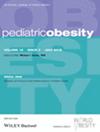Food addiction and its impact on weight status in children and adolescents: The mediating role of responsive eating pattern
Abstract
Aims
This research explores the relationships between food addiction (FA), eating behaviours, and weight status in school-aged children and adolescents, aiming to understand how FA influences weight.
Methods
By using a cross-sectional design, 426 healthy children and their parents were enroled in Eastern China. FA was assessed using the Chinese version of the Dimensional Yale Food Addiction Scale for Children 2.0 (dYFAS-C 2.0), while eating patterns were identified using latent profile analysis (LPA) derived from the Children's Eating Behaviour Questionnaire (CEBQ). Weight status was indicated by Body Mass Index Z Score (BMIZ) and waist-to-height ratio (WHtR). The associations among FA, eating patterns, and weight status were explored using structural equation modelling (SEM).
Results
Two eating patterns, the Responsive and the Controlled Eating Patterns, were identified. The Responsive Eating Pattern was characterized by high food responsiveness, enjoyment of food, emotional eating, fast eating, low satiety responsiveness, and food fussiness and was associated with FA and weight status (p < 0.001). The SEM results showed the Responsive Eating Pattern partially mediated the relationship between FA and weight status, with a mediation effect of 1.183 (95% CI [0.784, 1.629]) for BMIZ and 0.043 (95% CI [0.025, 0.063]) for WHtR.
Conclusion
Increased FA is associated with a higher weight status through a specific eating behaviour pattern characterized by high responsiveness to food, emotional and rapid eating habits, and low satiety. The findings suggest that targeted interventions should take these eating behaviour patterns into account to reduce the impact of FA on weight status among children and adolescents.

 求助内容:
求助内容: 应助结果提醒方式:
应助结果提醒方式:


